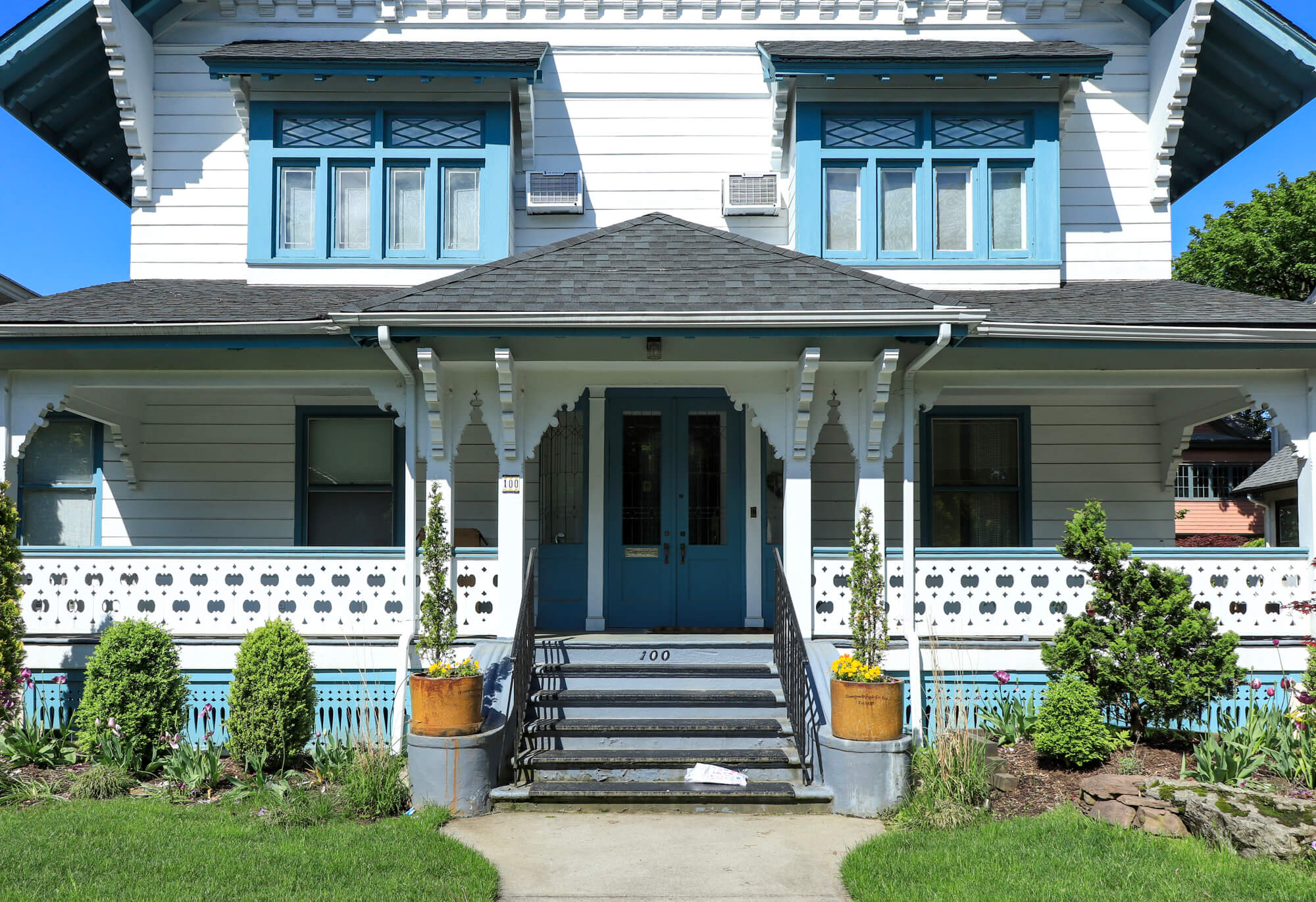Prospect Park South's Dash of Swiss on Rugby Road
Architect John J. Petit took his inspiration from many sources, and looked to other cultures for his inspiration for his Prospect Park South houses.

Editor’s note: This story is an update of one that ran in 2013. Read the original here.
Architect John J. Petit took his inspiration from many sources, and looked to other cultures for his inspiration for his Prospect Park South houses. Here at 100 Rugby Road he was inspired by the writings of Andrew Jackson Downing, the preeminent architectural writer of the mid-19th century.
Downing wrote in his “Architecture of Country Houses,” that “the genuine Swiss cottage may be considered the most picturesque of all dwellings built of wood.” He went on to say that the ideal place for such a house would be as in Switzerland, on the side of a mountain or hill, and that anywhere else, the chalet would look ridiculous and affected. Downing would go on to note that if an architect wanted to use the chalet in a non-chalet environment, that the elements should be restrained, and toned down to fit the environment that the building would be situated in. Wise words that Petit took to heart.

Like his “Japanese House,” and other exotic Petit houses, this Swiss chalet is really a Victorian lady in a costume, this time a Swiss dirndl. Completed in 1900, the house itself is a basic large foursquare style home, with Swiss ornament. For good measure, there’s even a bit of Tudor Revival tossed in, reminiscent of Petit’s Siatta House, in Dyker Heights, and later neo-Tudors that he would build here in Prospect Park South.

The house was originally a dark color, with white highlights, as can be seen in an historic photo from 1902. Swiss inspired details abound; the jigsaw cut screens, the large brackets supporting the porch, the roof and the hooded roofs over the second story bays, and the ornate vernacular carved panels on the third floor. The bands of small arches also add to the Swiss charm.
The house’s deep overhanging roof with the large brackets on front and on the sides are very attractive, as are the two bays with casement windows and the third floor diamond patterned windows. Petit channeled Switzerland without looking affected or ridiculous. Downing would have been proud.

The house was bought by Dr. George H. Watson, a retired physician from Boston. Watson bought up all the land between this house and Albemarle Road, but he eventually sold the other two lots. He is mentioned in several articles in the Brooklyn Eagle, and he and his wife were guests at the home of Dean Alvord, the developer of Prospect Park South, who lived just down the street on Albemarle Road.


[Photos by Susan De Vries]
Related Stories
- 15 Architects Whose Designs Shaped the Look of Historic Brooklyn
- Walkabout: The Art of Building Dreams
- Marketing Prospect Park South to Brooklyn Buyers in 1900
Email tips@brownstoner.com with further comments, questions or tips. Follow Brownstoner on Twitter and Instagram, and like us on Facebook.









What's Your Take? Leave a Comment